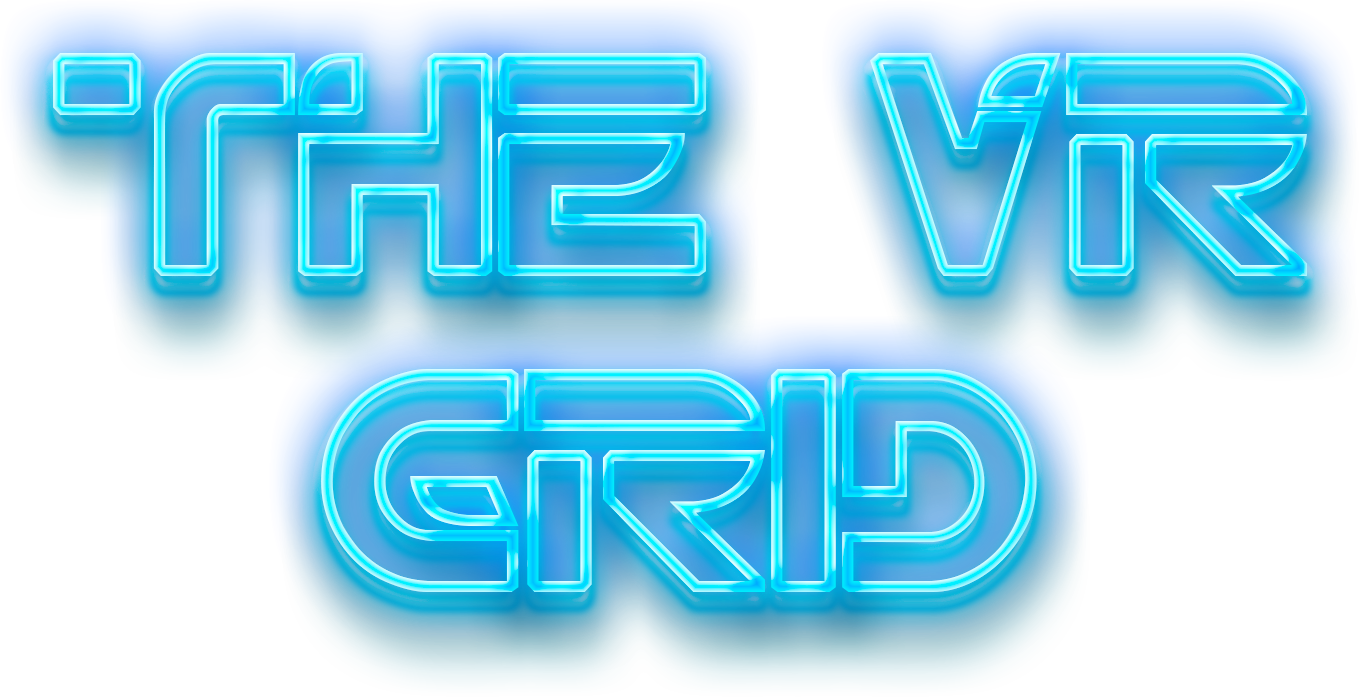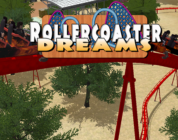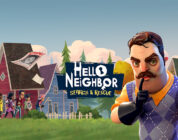Developer / Publisher – ARVORE Immersive Experiences / Atari
Price – US $29.99 / CA $34.99 / EU €29.99 / UK £24.99
Release Date – June 15th, 2023
Input – 2 x Motion Controllers
Play Area – Sitting, Standing
Store Links – Steam, Quest, PlayStation
Reviewed on – PlayStation VR 2
This is Pixel Ripped 1978, the 3rd instalment in this series that blends classic 2D gaming in 3D VR worlds like no other though unlike it’s predecessors, 1978 is the first in the series to use licensed games thanks to partnering up with Atari. I really enjoyed the nostalgia romp that was the first 2 games and also enjoyed the clever and meta use of VR so let’s see if ARVORE can keep that momentum going by not just paying homage to classic games but featuring some classic titles from the Atari library.
So, if you haven’t played either of the previous Pixel Ripped titles, please do so as they are an absolute treat, merging interactive 3D environments with 2D games that reference some of the greatest titles and genres from the 80’s to the mid 90’s. 1978 does carry on the story from the 1st 2 though by no means is it a very in-depth story so if you decide to hop into this one 1st, you won’t be too lost as the over arching plot remains largely the same. The Cyblin Lord has returned to mess up both the gaming world and the real one and it’s up to you as the heroine Dot to thwart his efforts by jumping between games and reality with a bulk of the story here taking place in the late 70’s and early 80’s. For those historians out there, this was Atari’s time to shine thanks to the 2600 but for those expecting a wonderful trip down memory lane, you may want to temper those expectations as this takes place in an alternate history where you may recognize some licenses, but not in the way you may remember.
For myself, this is where the game falters as while I am above the age of 40, I missed this era of gaming with many of the titles referenced in here being one’s I have never seen or heard of before. Centipede shows up as do references to classics like Space Invader’s, Yar’s Revenge and few more, but when characters like Bentley Bear and Groovin’ Feeddie show up, I was admittedly at a loss and had to do a little research to see what games they appeared in… if any. That research did teach me some things, but the fact that the some of the ‘classic’ games you get to play through never actually existed makes this either a sort of weird fictional history lesson or a confusing trip down fake memory lane. Don’t get me wrong, I still enjoyed playing through these twists on retro games and in truth, this is exactly what the Pixel Ripped franchise is known for, but given that the Atari license is attached to this, I was a little let down by how it was used when it comes to IP’s, though as this series has never had specific licenses to any of the games they have referenced before, I admittedly might be making a bigger deal this than I should be….I dunno.
Now, as for the gamplay, I am happy to report that fans of the 1st two games will be quite comfortable with what’s here as the developers continue to find new ways to merge the various worlds you play in. You’ll start off in 1996 where the previous title ended playing as Dot in 1st person action in a 2D RPG style game. Soon enough, the Cyblin Lord shows up and you need to chase him through time where you end up controlling not just Dot, but Bug, a programmer who worked for Atari all those many moons ago. It’s here at Bugs desk where you’ll spend a majority of the game playing the various cartridges for your Atari 2600 on a nearby television but instead of playing the “original” version, you’ll be playing these games with Dot as the main character in classic side-scrolling action. However, in each of these games are portals which allow you to travel into the game, turning this into a sort of retro fps where Dot must navigate these realms in 3D, activating triggers which will affect the 2D version, typically bridging gaps that prevented Dot’s 2D progress.
The 2D stuff works exactly as you’d expect though in VR your 2 tracked hands will sort of stick to the Atari joystick once they get close and to unstick one of them, you’ll need to pull one hand away from the other, allowing you to grab stuff around you. This works okay, but when later games challenge you to interact with the stuff around you to remove distractions that get in the way of your play time, it can be a finicky system that had my hands flailing more than I intended or accidentally hitting a big red button on my nearby PC causing some accidental game deaths. Thankfully the checkpoint system in the games is very forgiving and you have infinite lives so very little progress was ever lost upon death. You may have to answer a ringing phone, don a nearby mask, toss a football or a bunch of other simple tasks that distract from your game time. Occasionally, you’ll be tasked with debugging which requires you to play through a game and remove literal bugs that appear on your monitor by knocking them into the real world where you can slap them with your hands. It’s cute, clever and at times hectic as in order to slap, you’ll be taking your hands off the joystick, making your game character vulnerable to attack. Once you have removed all the bugs from a game, your co-worker will bestow a new function for your 2D game be it an upgraded joystick or hack that lets you mess with the game outside of it’s normal rule set. This same interaction goes for the boss battles where you’ll need to play against the Cyblin Lord by using nearby items as he brings the game out of the television and into reality. These were easily my favorite moments in the series and 1978 does these just as well as the previous entries, making these fights fun and original.
Where 1978 takes a knock is the 3D first-person sections of the game where Dot can now free roam the environments with each game looking different, but playing almost identically forcing the exploitation of poor AI by keeping them far away while shooting them with your arm canon or using your melee weapon should they get to close. Said hand canon shoots slow enough to be annoying and while I’m sure this was designed to force melee in those tough situations, I just stuck with my gun as I’m not really a fan of waggle fests which is what the close combat typically devolves into. It’s here where you’ll unlock additional powers that let you change or fix certain obstacles with each game unlocking a new power which will either create, move or fix select objects as indicated by their matching colours. Each of these actions results in the same outcome; allowing Dot to move past a barrier to either progress, find more gems, health, a new melee weapon skin or 1 of 40 Golden Atari cartridges hidden throughout this roughly 4-hour game. These sections aren’t bad per se, but they are monotonous and lack the personality present throughout the rest of the game.
The Pixel Ripped series has always gone for a more cartoonish art-style, at least when it comes to the real-world visuals and in 1978, it seems like they have doubled down on that choice with outlandishly drawn characters that still suffer from some stiffer animations. They aren’t really the star of the show or anything with the few environments you find yourself hunkered down in all looking like you’d expect be it your bedroom, living room, office and a few more locales. You can interact with items strewn about and you may be visited by those colleagues I had mentioned though all the real-world stuff really is just a vehicle for the gaming with a bulk of the game having me play on my monitor or inside the games which do look like modern interpretations of old 8-bit classics. They look blocky and did remind of games like Minecraft but with enough unique visual flare and lighting effects that made each look like they belonged in different games. With that said, in my opinion they looked a little too modernized in that the 1996 RPG world looked much more dated than the worlds from the previous era’s which I also thought was an odd choice given just how well the developers have nailed the look and feel of these retro worlds in the past. They don’t look bad, I just though they didn’t quite match the era of gaming they were going for compared to the previous Pixel Ripped titles. Regardless, everything in here does get the job done and when those worlds do collide, these are the best looking and most colorful moments of the game making many of my issues somewhat moot as I quickly forgot about any visual shortcomings in favor of the fun I was having, especially during those boss battles.
Something the Pixel Ripped series has always nailed is the sound design and 1978 is no exception offering a deliciously retro soundtrack befitting of the era. The games you play on screen contain the midi style soundtrack you would expect from older titles while venturing into these realms in 3D elicits the same soundtrack but more fleshed out to modern day standards creating a nice blending of new and old. The people around you may spread gossip about the happenings in the Atari offices and your nearby phone will often ring and I’m sure most of us will recognize some familiar voices on the other end adding some nice personality and light-heartedness to this whole affair. In the games, any NPC’s that talk to you will talk via text bubbles and some simple sounds which all sounded just fine save for your Master whose digital voice I found to be quite grating which is only made worse by his lengthier conversations though besides that, everything in here sounds just fine. There is spatial audio at play as well though given just how much of the focus is on the screen ahead of you, it’s something that I appreciate is here, but it’s underutilized and almost unnecessary really.
So, what this all boils down too is yet another solid entry in this franchise, but one with a few more issues than its predecessors. I’m not saying this is bad…far from it but it just feels like more could have been done with the license and the 3D portions could have been better. I enjoyed the story and it does feel like the end of a trilogy with regard to how it all plays out. The final stage was a very nice surprise but outside of that and the boss battles I found the game loop here to be a tad more monotonous than the previous games in the series. Factor in that asking price and I can’t help but think that waiting for a sale maybe the best choice considering the content value here. If you have liked the series up to this point, I bet you’ll like 1978 as well but even with the Atari name attached to this one, this should’ve grabbed me more than it did.
ARVORE Immersive Expereinces provided The VR Grid with a press code for this title and, regardless of this review, we thank them for that!




